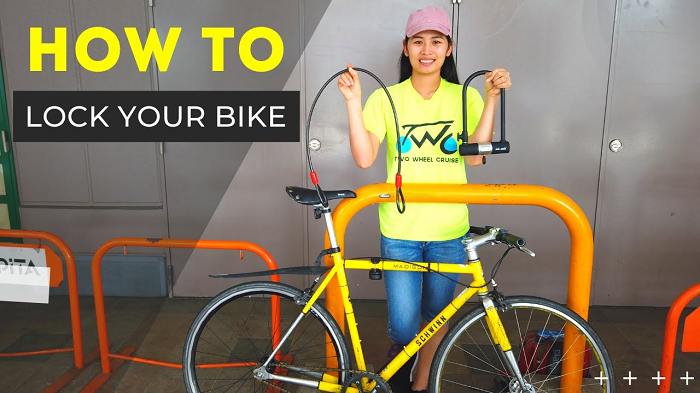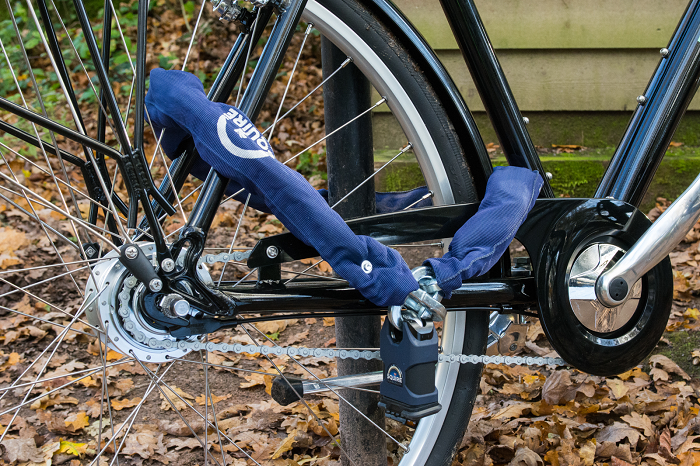The Essential Guide to Bike Locks: How to Keep Your Cycling Safe
2024-10-30 09:04
As cycling becomes increasingly popular for commuting, leisure, and exercise, bike security has never been more critical. Investing in a reliable bike lock can be the difference between keeping your prized ride safe or falling victim to theft. This article explores the different types of bike locks, what to look for when choosing one, and tips on ensuring maximum bike security.

Types of Bike Locks
There are several types of bike locks available, each offering a unique combination of security, portability, and convenience. Here’s a breakdown of the most popular options:
1. U-Locks (D-Locks)
U-locks, or D-locks, are shaped like a “U” and are among the most popular choices for cyclists. These locks are known for their high security due to the rigid, thick metal that is difficult to cut with bolt cutters or saws. U-locks are ideal for locking your bike to sturdy, immovable objects like bike racks or street poles.
Pros:
High security
Durable and resistant to cutting tools
Relatively portable
Cons:
Can be heavy
Limited locking radius, making it challenging to secure larger parts
2. Chain Locks
Chain locks are another robust option for bike security. They consist of a heavy-duty chain made from thick, hardened steel and are secured with a padlock. The flexibility of chain locks allows for easy attachment to larger and more awkward structures.
Pros:
Flexible, easy to secure to various objects
Difficult to cut if made of hardened steel
Cons:
Heavy and less portable than U-locks
Can be cumbersome to carry around
3. Folding Locks
Folding locks are a relatively new option, combining elements of both chain and U-locks. These locks consist of several steel plates connected by pivoting joints, allowing them to fold into a compact shape when not in use. They offer a good balance between security and portability.
Pros:
Compact and easy to carry
More flexible than U-locks
Cons:
May not be as secure as U-locks or heavy-duty chains
Hinges can be a weak point if not constructed well
4. Cable Locks
Cable locks are the lightest and most portable option. They are made of intertwined steel cables covered with a protective plastic sheath. Cable locks are easy to carry, flexible, and perfect for quick stops in low-risk areas. However, they are the least secure type of lock, as they can be easily cut with bolt cutters.
Pros:
Lightweight and portable
Very flexible, suitable for securing multiple parts
Cons:
Low security; easily cut
Best used as a secondary lock
.jpg)
Key Features to Consider When Choosing a Bike Lock
Selecting the right bike lock requires understanding your needs and how much security is necessary for your situation. Here are some factors to consider:
1. Security Rating
Many locks come with a security rating provided by independent testing organizations like Sold Secure or ART. These ratings help you understand how resistant the lock is to theft attempts. The higher the rating, the more secure the lock.
2. Portability
Heavier locks often provide greater security but can be challenging to carry around. Consider how far you travel with your bike and if a bulky lock will fit into your daily routine. Some locks come with mounting brackets that attach to your bike frame, making transportation easier.
3. Size
The size of the lock matters. Smaller U-locks are more challenging to leverage with tools, making them harder to break, while longer chain locks provide more flexibility for securing to various objects. Make sure the lock you choose can easily fit around both your bike and whatever you plan to secure it to.
4. Locking Mechanism
Some locks use a key, while others have a combination mechanism. Keyed locks can offer higher security, but you risk losing the key. Combination locks are convenient but may not be as secure if the mechanism is not well-built. Choose a lock with an anti-pick feature for added security.
Tips for Maximizing Bike Security
Even with a high-quality bike lock, using it correctly is crucial for maximum security. Here are some tips to protect your bike:
1. Lock Through the Frame and Rear Wheel
Always secure the lock through the bike’s frame and rear wheel rather than just the front wheel or seat post. The rear wheel is typically more expensive to replace, and securing both the frame and a wheel reduces the chance of theft.
2. Choose a Secure Location
Whenever possible, lock your bike in well-lit, high-traffic areas. Avoid isolated spots that make it easy for thieves to use tools without drawing attention. Secure your bike to a sturdy object that cannot be easily cut or lifted.
3. Use Multiple Locks
Consider using two different types of locks (e.g., a U-lock and a cable lock) for added security. A thief equipped to defeat one type of lock may not have the tools to tackle another. Using two locks also makes stealing the bike more time-consuming.
4. Keep the Lock Off the Ground
When locking your bike, avoid resting the lock on the ground. This prevents thieves from using tools like a hammer or chisel, which become more effective when the lock is on a solid surface.
5. Remove Accessories
Bike accessories like lights, GPS units, and pumps can be easy targets for thieves. Remove them or secure them with additional locks if necessary.

Conclusion
A good bike lock is an essential investment for any cyclist. Understanding the different types of locks and knowing what features to look for will help you choose the lock that best suits your needs. Lockpickmall is a professional lock picking tool store that sells a variety of lock picking tool sets, Electric Lock Picks, professional bump keys, and more. But remember, we only provide you with lock picking tools. Please follow the ethical and legal standards of lock picking, which will be the premise for you to solve the lock picking problem!

 Like Us on Facebook to enjoy 5% discount
Like Us on Facebook to enjoy 5% discount